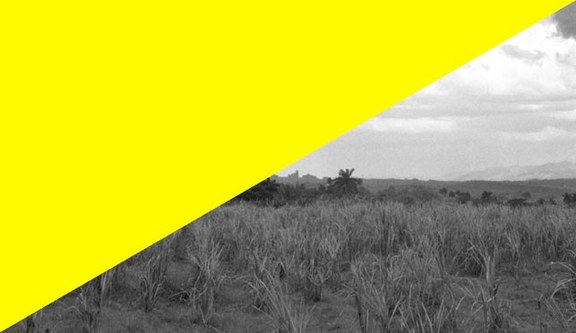How do images tell the story of a country?
Montag, 08. Juni 2015 - 19:00 Uhr
Akademie der bildenden Künste Wien
IKA
Lecture by Marie-Françoise Plissart, photographer and filmmaker (Belgium) within the Frame of Into the city, into the Territory, IKA Lecture Series Summer Term 2015, curated by Lisa Schmidt-Colinet, Platform Geography, Cities, Landscapes.
(Lecture in French language and will be translated in German)
The lecture series will focus on the question of representation and description of landscape, territory and the city. At what point does the description through drawings and other media become a project on its own?
In this context Marie-Françoise Plissart is presenting two films, one of which was made in 2003: Fleuve Congo à Kinshasa. It's a single, 18 minutes shot of the Kinshasa riverside. The film shows reality as it is, without any editing. The sound was recorded during the shooting. This simple approach allows the story to unfold.
The second film, E25 is a 15 minutes picture (with Jacques André). It's the outcome of a very different process. Here, editing is of the utmost importance. The central theme revolves around bridges, which were filmed all over Europe and in India. They are shown as a revealing factor of our history, imagination, economy or politics. In order to link these structures, fiction movies were researched. When the filmmakers discovered images of bridges representing the fabric of our contemporary world, they kept a trace of these scenes in the shape of sound extracts. E25 is the artist?s very own bridge to what is unseen or, on the contrary, too familiar.
Marie-Françoise Plissart is a photographer and filmmaker. Photographic narratives, portraits, architecture and urbanism: those are the recurrent themes in Marie-Françoise Plissart?s career. They all come together when she explores the relationship between a city and its inhabitants, the many ways in which people shape their environment and are defined by it. They never entirely are: every individual both coincides with and transcends his or her social context. There?s tension there, a fracture. Marie-Françoise Plissart investigates precisely that zone of embodiment and separation.
She is author of following films: Le Quatrième mur, 50 minutes, 2013, coproduction Derives, RTBF/Arte; Atomium, in/out. 25minutes. A personal account of the renovation of the Atomium. Co-production RTBF/ Michel de Wouters, February 2006; Un jour l?avenir nous donnera raison. A boxer and the river in Kinshasa. 24 minutes, Production Michel de Wouters, 2002; L'occupation des sols. 26 minutes. A city as narrative told from its summits. Co-production RTBF/Arte/Michel de Wouters, 2002.
Marie-Françoise Plissart published numerous books, amongst them:
Souvenirs d?une maison de rendez vous, Les impressions nouvelles, avec Isabelle Léonard, 2012; Groene singel, geschiedenis van de antwerpse ringruimte, 1906-2009, éditions Ludion 2009; Mons, Impressions Nouvelles, février 2009; A World without End. Editions Fotomuseum Provincie Antwerpen 2008; Le Transsiberien, September 2005, Fondation Mercator (with Benoît Peeters); Kinshasa, Tales of the invisible city, September 2004, Editions Ludion (with Filip De Boeck); Bruxelles, Horizon Vertical, trilingual publication, Editions Prismes, December 1998; Aujourd?hui, photo narrative, Arboris, 1993; Droit de regards, photo narrative (with Benoît Peeters and a reading by Jacques Derrida), Editions de Minuit, 1985.
Recent exhibitions include: A World without End. Retrospective, Musée de la Photographie, Anvers, Septembre 2008 or Kinshasa, the imaginary city, Golden lion, Architecture biennale of Venice, September 2004, curated by Filip de Boeck et K. van Synghel.
For many years the various discourses on landscape urbanism have called for the dissolution of the dividing line between the city as densely built fabric and the territory as the surrounding landscape - promoting an understanding of our living environment as a continuous milieu. Movements have developed in two directions: Into the city, as constructed artificial nature, as buildings evoking land formations or as intense verdure overgrowing the city fabric. Into the territory, as projects of extensive mapping describing the environment and it's geological, hydrological or biological phenomena in order to reveal potentials of the site and to cautiously integrate human settlements and infrastructure into the natural habitat. At the same time, European cities like Vienna seek to further densify the existing city fabric while looking for new strategies for spaces to breath. Yet they continue to understand the relationship of buildings and open space as binary conditions in opposition.
The forthcoming Institute for Art and Architecture lecture series continues the exploration of the relationship between city and landscape, focusing on the role of descriptions and representations in our understanding of territories and the urban realm.
The public lecture series at the Institute for Art and Architecture is the space were international speakers, students and teachers together with the Viennese public can explore and discuss specific topics in the field of art, architecture and urbanism, this summer term presented from the view of Geography, Landscapes, Cities.
Sponsored by Waagner Biro
